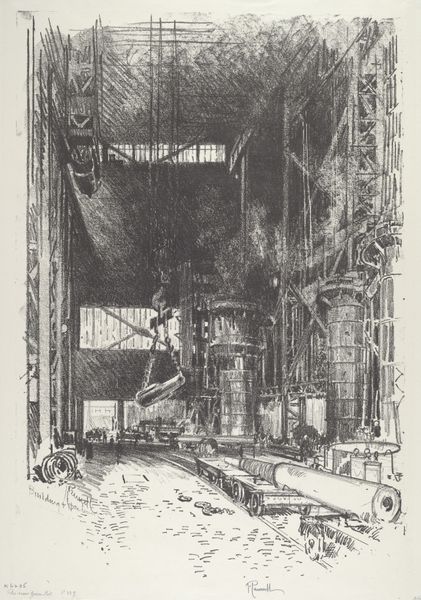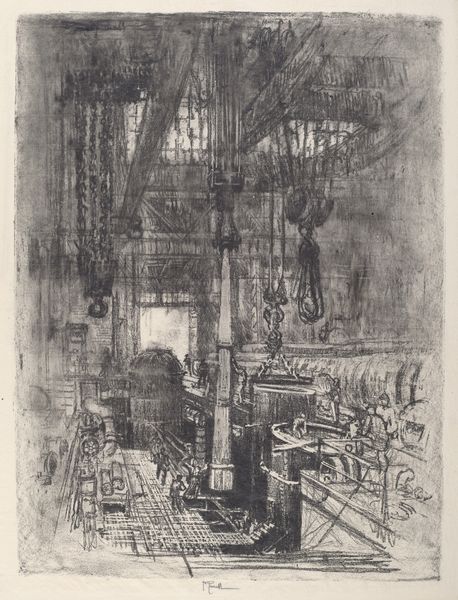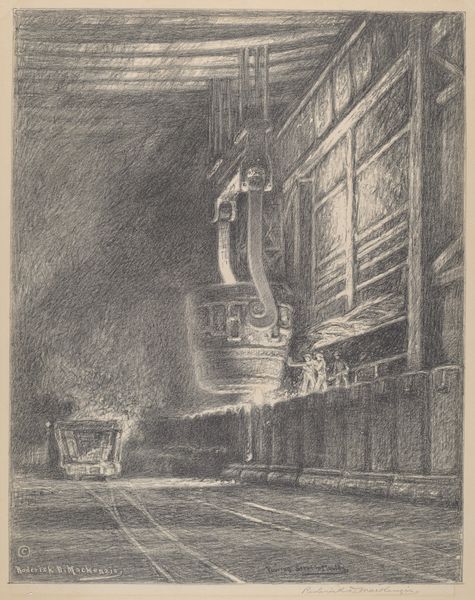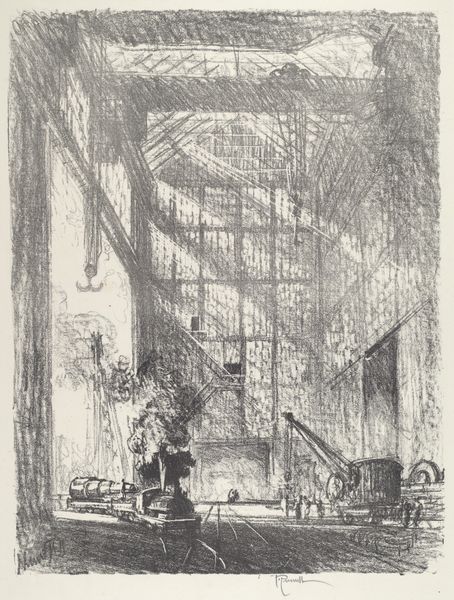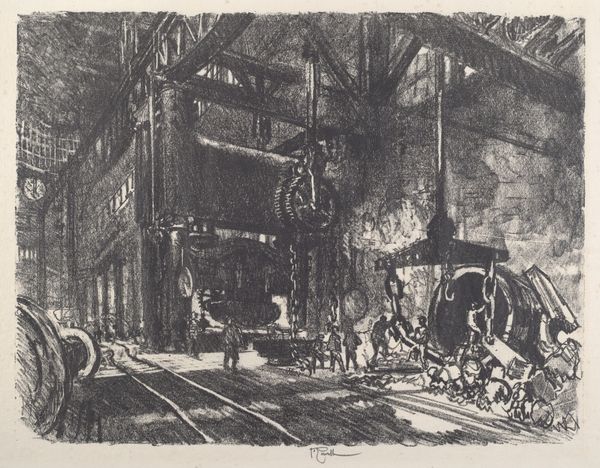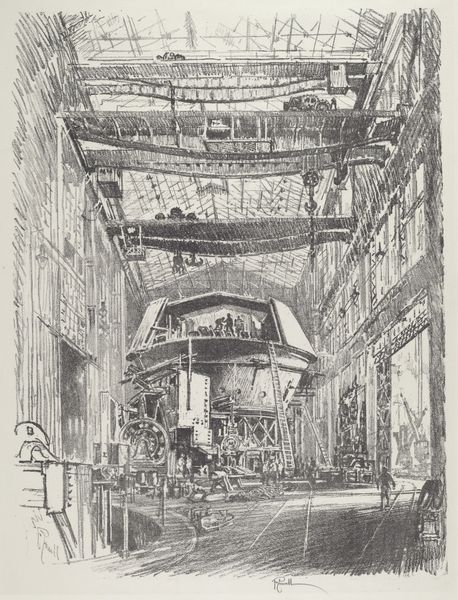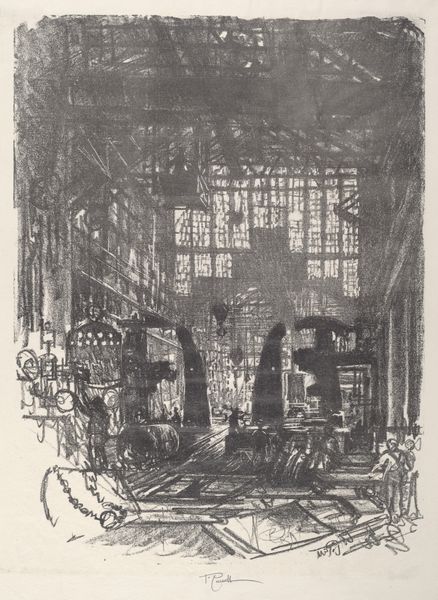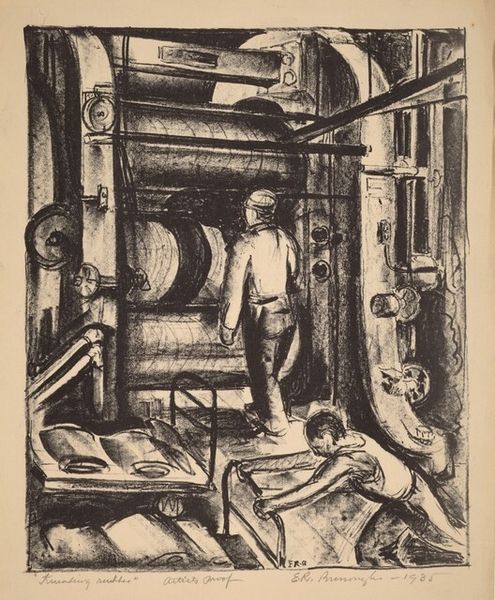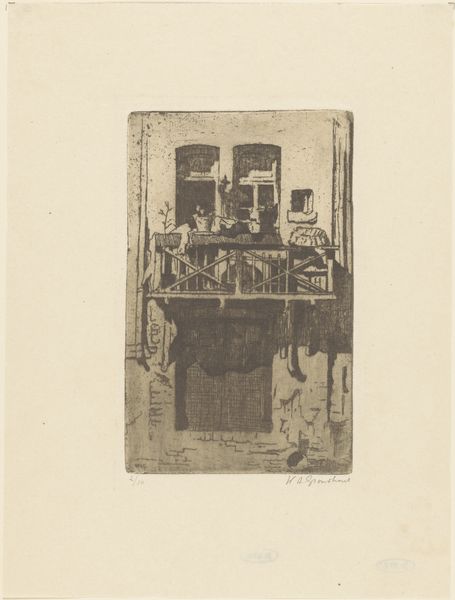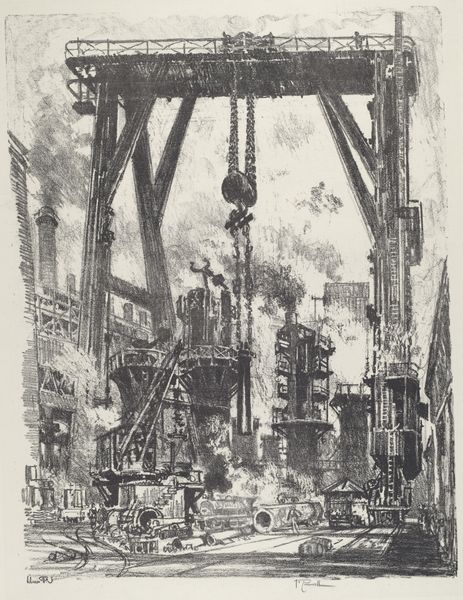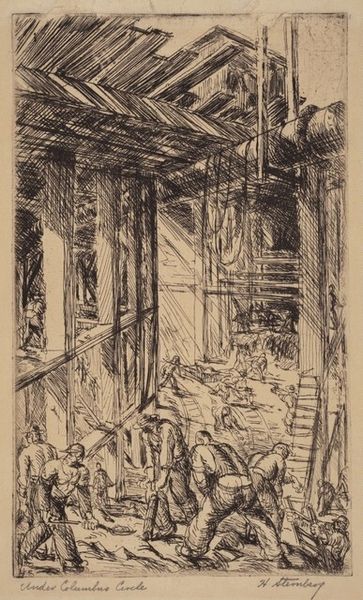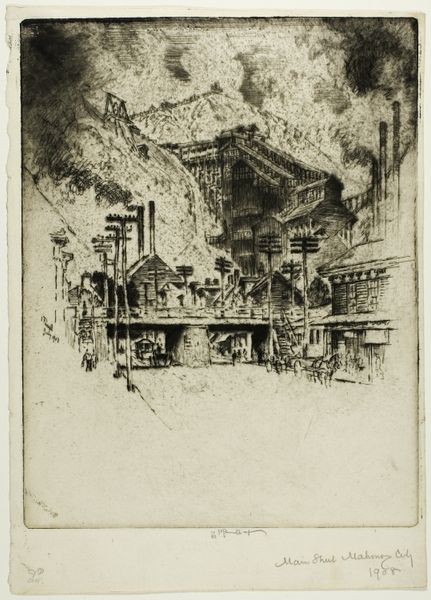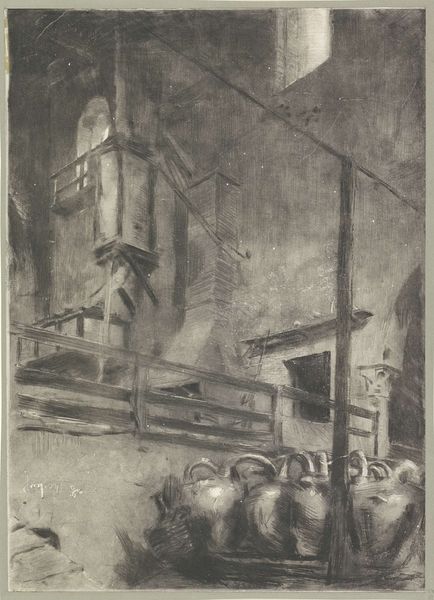
print, graphite
# print
#
line
#
graphite
#
realism
Copyright: National Gallery of Art: CC0 1.0
Curator: Take a look at Joseph Pennell's 1917 graphite print titled "Shaping a Gun from an Ingot." It depicts a scene of industrial labor, rendered in striking detail. What strikes you initially? Editor: Well, my first thought? Claustrophobia. All that heavy machinery, those tiny figures... it's both awesome and terrifying. I feel the heat and the relentless energy emanating from the center. Is it me, or is there an eerie glow from the machine itself? Curator: That feeling is quite understandable. Pennell created this piece during World War I as part of a broader effort to depict American industry as a crucial component of the war effort. The 'glow' may speak to that propagandistic effort, but the labor practices here cannot be overlooked. Notice how the figures on the left are in shadows, but the workers directly interacting with the machinery seem almost like fireproof Titans—suggestive perhaps, of some sort of divine energy transferred to humans. Editor: "Divine," maybe for some folks, but for the workers, I'm willing to bet it's more about grime and sweat. I like the perspective Pennell's captured, staring upwards like we are craning our necks, emphasizing the sheer scale and dominance of these monstrous metal structures. Curator: Absolutely. This elevated perspective certainly emphasizes the imposing nature of industrialization, playing into anxieties surrounding it, and glorifying those advancements simultaneously. There’s also a deliberate use of line work here; it's dense and chaotic in areas depicting supporting structures, yet sharp and focused on the central machinery. That duality captures the tension between progress and disorder. Editor: True, it's a contrast for sure. Makes me wonder, did Pennell actually spend time in these factories, sketching amidst the sparks and noise? You know, actually feel it. Or was he more of an observer, removed from the factory's gut and grind. That could totally change the impact for me. It's raw, for sure. It hints at the romance and at the brutality that makes the labor. Curator: He was very much embedded within these environments to develop his prints. And yes, I believe Pennell was invested in celebrating the efforts of American industry. Consider this image in dialogue with texts like "The Jungle", from the previous decade and a world war apart; consider the different reception afforded these visions of progress and industrial might! Editor: Mmm, now I'm off, imagining this scene, reeking of burning metal. Knowing this was wartime propaganda shapes it differently now. So many layers and shades cast by conflict! Curator: Indeed. Ultimately, it's a powerful testament to how art reflects—and shapes—our understanding of history and labor, and the powerful role images can serve to sway the population!
Comments
No comments
Be the first to comment and join the conversation on the ultimate creative platform.
